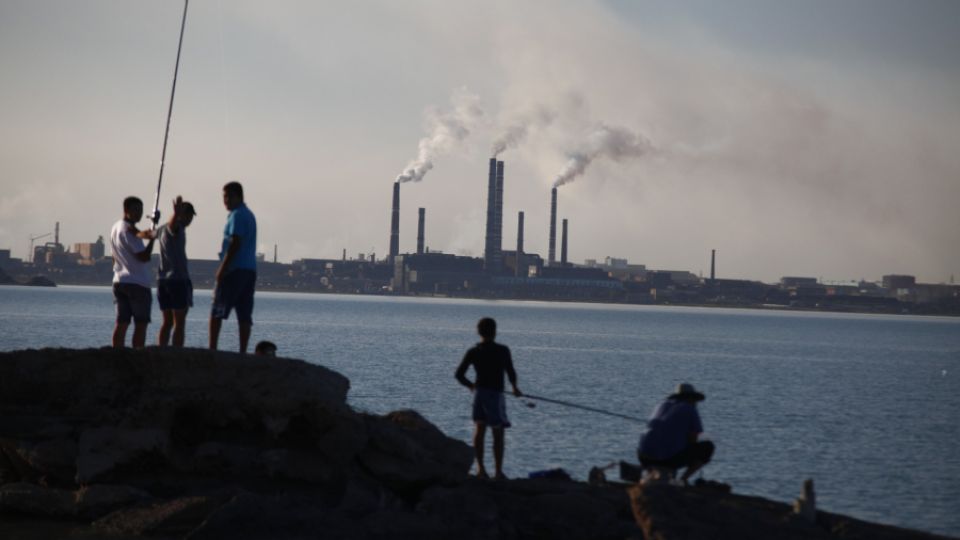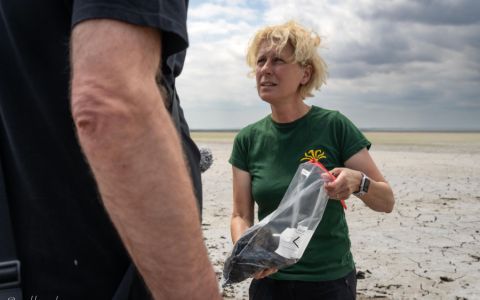PRAGUE/ASTANA – Steelworks, coal mines, and power plants. These are the largest sources of air pollution in Kazakhstan, and the biggest culprits of climate change. A new study produced by non-governmental organizations (1) comes with the first in-depth view. It suggests that if the country wants to fulfil its commitment to climate neutrality by 2060, it must immediately start fundamentally changing its industry, energy, and transport sectors. However, such a shift has not yet begun. What is even worse, the authorities do not have an overview of where the pollution originates and in what volumes (2). Air pollution and climate change are firmly interconnected, both posing significant risks to human health, ecosystems, and economic stability.
Two new international studies were published by the non-governmental organizations EcoMuseum (Karaganda) and Arnika (Czech Republic) in cooperation with the company World from Space with the financial support of the European Union, the Transition Promotion Program of the Ministry of Foreign Affairs of the Czech Republic, and GIZ (Germany). The research is based on remote sensing of the Earth carried out by EU satellites in the Copernicus Programme.
Air pollution in Kazakhstan as Seen from Space
Greenhouse gas records and monitoring in Kazakhstan: data unavailable
“The most significant pollution was found in the industrial centres of Pavlodar, Shymkent, Ekibastuz, Oskemen, Karaganda, and Temirtau. Its source is mainly power plants, steelworks, and other industrial facilities. Methane emissions from coal mines contribute significantly to climate change. Almaty also suffers from high air pollution, but the main cause is cars and poor public transport," is how Matus Hrnciar from the company World from Space, specializing in the analysis of data obtained by remote sensing of the Earth, summarizes the study.
In 2019, Kazakhstan ranked as the twenty-first worst emitter of greenhouse gases in the world. Air pollution causes the premature death of approximately ten thousand people and an economic loss of 10.5 billion US dollars every year (3). At the same time, President Kasim Zhomart Tokayev announced an ambitious strategy for a climate-neutral Kazakhstan by 2060; this commitment was then presented by the authorities as a serious promise at the international negotiations of the Paris Convention.
The new Environmental Code emphasizes the "polluter pays" principle. However, the national plan for mitigation and adaptation to climate change is still in its infancy, the development director of EcoMuseum, Dmitriy Kalmykov, comments. "State authorities use various methods for monitoring and recording greenhouse gas emissions. Thus, there is a lack of reliable data, which is the basis for the success of any strategy. Unfortunately, we have not yet started taking practical steps to achieve carbon neutrality," he adds.
The authors of the international study recommend that Kazakhstan implements reliable air quality monitoring and data collection. Reducing the use of coal and a shift to renewable energy sources are pivotal strategies. To enforce air quality standards effectively, it is essential to bolster regulatory frameworks and environmental liability through inspections, audits, and penalties. Promoting energy efficiency, including renovating buildings and smart transportation solutions, is another key aspect. Public awareness and participation are essential as Kazakhstan faces challenges because of high car usage and reliance on polluting heating methods.

Notes:
1) Air pollution in Kazakhstan as seen from Space
2) Greenhouse gas records and monitoring in Kazakhstan: data unavailable
3) World Bank (2023): Kazakhstan Discusses Actions to Reduce Air Pollution with Partners
4) Air pollution – 5 main findings:
1. Nitrogen dioxide (NO2) concentrations are higher in major cities and industrial sites, with the highest levels being around Pavlodar, Almaty, and Shymkent. The impact of extensive industry is particularly evident in Ekibastuz, with its thermal power plant and coal mine, and Temirtau, with its major steel industry, which exhibit NO2 levels two to three times higher than those in cities of comparable size.
2. An increased concentration of methane (CH4) was detected in the vicinity of coal mines. Surface mine emissions tend to be lower and also diffuse more when compared to emissions from underground mines. The highest regional concentrations occur in the city of Shymkent and the surrounding region of Turkistan and in the regions of Mangystau and Kyzylorda.
3. High levels of sulphur dioxide (SO2) are observed around mining industries and coal-fired power plants. In regions such as Pavlodar, Almaty, Oskemen, Astana, and Karaganda, the SO2 levels surpass both the daily maximum limits set by the World Health Organization and Kazakhstan's own standards. The Almaty Region has the highest concentrations overall, while the Pavlodar Region has the highest year-round levels as a result of coal-fired power plants and mining. The seasonal pattern displays a peak in winter because of house heating.
4. Particulate matter (PM10) concentrations are high in the south and south-east of Kazakhstan because of natural sources such as dust storms from bare soil and deserts. Increased concentrations of PM10 from anthropogenic sources are experienced in urban areas in other parts of Kazakhstan, including Karaganda, Oskemen, Aktobe, Astana, and Kostanay.
5. The state authorities of Kazakhstan use several different systems for the monitoring and records of greenhouse gas emissions. They are mostly based on estimates. The data reported to international organizations varies significantly and there is doubt as to its relevance. The lack of reliable data undermines the effort to build a carbon-neutral country.
5) Air pollution – five main recommendations:
1. Strengthen air quality monitoring and data collection
Kazhydromet is responsible for owning and operating the National Air Quality Monitoring Network. It is essential to expand the monitoring infrastructure, especially near major pollution sources. According to the experience of the EU countries, building a unified system operated by one authority on a national level which also performs validation of data seems to be the best option.
2. Ramping down coal use and renewable energy deployment
Preventing the building of new fossil fuel power plants, reducing the share of fossil fuels, and diversification of the energy production among renewable sources are key. On the evidence of examples from the coal transition regions in the EU and US, it is important to develop a plan for reducing coal consumption. Investing in solar and wind farms can facilitate the speedy integration of renewable energy sources into the grid. A specific focus should be put on efficient district heating and cooling. There is a pressing need to prioritize the renovation and improvement of residential, commercial, and public buildings in terms of energy efficiency.
3. Regulatory frameworks, environmental liability, and local emission inventories
Kazakhstan is moving towards more empathic environmental policies with the adoption of international climate policy resolutions. Despite the presence of legislation, its implementation and enforcement remain weak, and there is inadequate collaboration among different government bodies. The methods used to establish emission limit values are associated with insufficient environmental quality standards, and there is a lack of monitoring and enforcement. It is now vital to strengthen the capacity of regulatory agencies. Local government agencies can utilize emission inventories as a tool to identify significant sources of air pollutants.
4. Energy efficiency and emission control measures for industry
Heavy industry and energy generation have the biggest impact on air quality and human health, also because these facilities are often located within cities. This highlights the importance of installing high-performance filters and adhering to strict standards. Any financial support and incentives should be tied to the use of the best available techniques (BAT) and the transition to low-carbon processes. Kazakhstan should establish a Pollution Release and Transfer Register (PRTR) according to the PRTR Protocol of the Aarhus Convention. In areas where monitoring indicates breaches of permissible pollution thresholds, stronger limits must be enforced.
5. Public awareness and participation
Ensuring public access to information, including data from the state air quality monitoring, smog warnings, and details on the operation of major pollution sources, is crucial. It is important to involve the public actively in decision-making processes, such as spatial planning and the approval of clean air plans, as well as conducting Environmental Impact Assessments (EIAs) and permitting procedures for industrial plants. There is significant reliance on passenger car transport and widespread use of polluting heating methods, including coal. It is essential to educate the public about alternatives and provide financial support for the transition.







